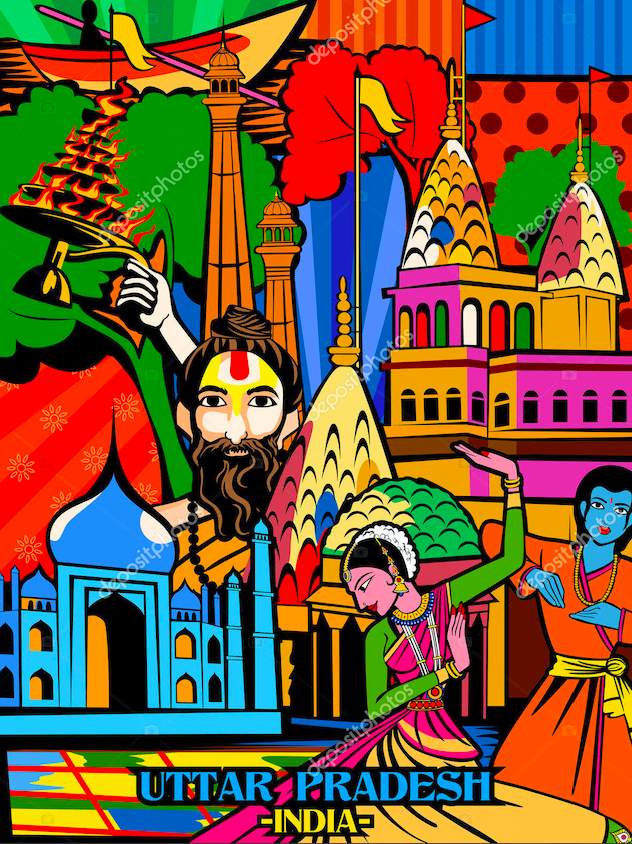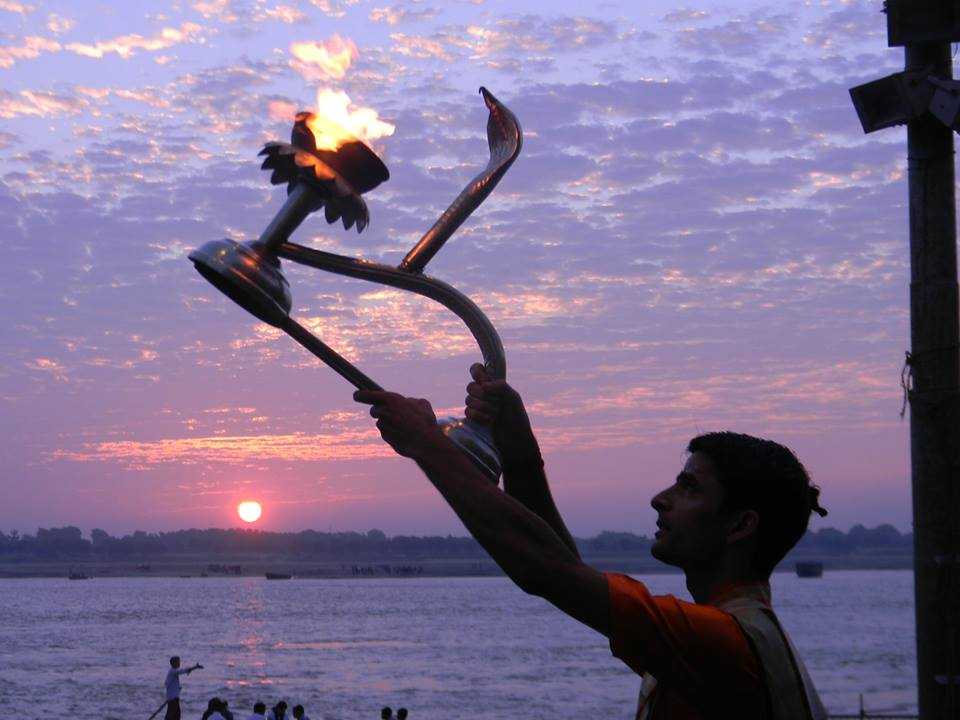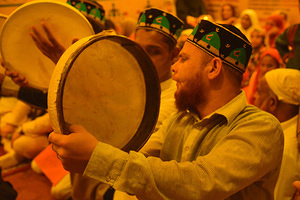
When you get over the sensationalised tales of guns and violence the Bollywood film industry feeds you, Uttar Pradesh has a lot more to offer. The accounts of the Paan-chewing, Bhojpuri speaking, and seemingly illiterate people of the state are not only highly exaggerated but also overused in the 21st Century. A state is made up of its people, and the people of Uttar Pradesh are more than the typecasts we assign them. The history and culture of the state have for long been overshadowed by these stereotypes which, in turn, has led to a prominent decline in the expansion of the customs, traditions, rituals, and practices the state is known for.
The culture of music of Uttar Pradesh has been on the decline for quite some time now. The music that rose to fame in the ancient and medieval times is well on its way to be forgotten. It is pitiable, for the state is unrivalled when it comes to variety in both classical, semi-classical and folk music. Amir Khusrow, an iconic Sufi poet, musician and scholar is credited for creating the Khayal style of music which became popular in the royal courts of Awadh. This classical form of singing is exceptionally popular among Hindustani or North-Indian musicians today for it is less serious than the Dhrupad style of singing, and its melodic verses, decoration of the swars, and romantic style makes it more viable to be sung among large audiences.
Semi-classical or Light classical music is a style in which the base lies in classical music, but herein the musician does not have to necessarily abide by the rules of classical music and can be flexible as and when he/she wants to. If a style of music of Uttar Pradesh is widely popular today, it is semi-classical music for it encapsulates both Ghazal and Qawwali, including the Thumri style of singing.

The Ghazal form of music came to India with the advent of the Muslims from the 12th century onwards. Sufi mystics can be credited for the spread of this style of singing. Invoking feelings of love, longing, melancholy, sometimes devotion to a higher being, the popularity of ghazals has heightened over the past decade with MTV Music and Coke Studio releasing newer versions of traditional ghazals.
Referred to as ‘Mallika-e-Ghazal’ (Queen of Ghazals), Begum Akhtar belonged to Uttar Pradesh. With tunes like ‘Mere Humnafas Mere Humnawa’ and ‘Aah Ko Chahiye Ek Umr Asar Hone Tak’, she mesmerised audiences all over the globe with her deep, rich voice and melodic singing. Talat Mahmood, considered as one of the greatest Indian semi-classical singers, called the state home as well. He received the Padma Bhushan in 1992 for his contributions in the domain of semi-classical and film music and is known for songs like ‘Dil-e-Nadaan Tujhe Hua Kya Hai’ and ‘Jalte Hain Jiske Liye’ among others.
The Qawwali style of singing is devotional, where through the power of lyrics and music Sufi saints and musicians attempt to reach a higher power and attain divine love. The style has achieved popularity in recent times due to filmi qawwali like ‘Kun Faya Kun’, ‘Khwaja Mere Khwaja’, and ‘Bhar Do Jholi Meri’. Linked to Islam, Qawwali too became popular with the coming of the Islamic Sultanate in North India. Belonging to the Hapur Gharana of Uttar Pradesh, Nizami Brothers are among the most popular Qawwali artists in the world.

The word Thumri comes from the word ‘thumakna’ i.e. to have a swinging gait. This genre of music is both devotional and romantic and is characterised by its sensual nature and erotic overtones. Sung mostly in Awadhi and Brij Bhasha, this style originated in Uttar Pradesh and is now sung all over North India. Patronised by the Nawab of Awadh, Nawab Wajid Ali Shah in the 19th century, Thumri style of singing slowly flourished all over the state and was separated into different styles and forms.
Thumris of eastern Uttar Pradesh, especially Banaras are more popular in present times and keep their unique nature intact even today. Girja Devi from Banaras was one of the most prominent Hindustani classical artists the country has ever known and was given the title ‘Thumri Queen’. Other notable Thumri artists from the state include Abdul Karim Khan, Rasoolan Bai, and Pandit Chhannulal Mishra.
It is ironic that the folk music of Uttar Pradesh is slowly decaying, for it is this folk music that highlights the cultural diversity of the state and showcases its uniqueness and speciality. Folk songs are an integral part of any state’s culture and for Uttar Pradesh, even more so. Whether it is for weddings, the arrival of the monsoon and separation of lovers, or for childbirth, ploughing season or funerals, there are folk songs for every theme and phase of both, the year and the life of the people of the state. These songs are commonly written in Braj-Bhasha, Awadhi, Bhojpuri, and Garhwali among others and are sung to the rhythm of folk instruments like Manjira, Chimta, Dholak, Sarangi and etc.

Some of the most popular folk songs include Rasiya which is based on the love between Radha and Lord Krishna. It is an essential part of Holi celebrations and is most popular in the region of Braj. There is Birha, which means separation and is sung by women when they are away from their lovers or when their husbands travel to distant places to earn money. Chaiti is season-specific, sung during the month of Chait (spring) and is associated with romance and fertility. It is also important, for spring is the season of harvest in the largely agrarian society of Uttar Pradesh. There is Kajari, the name of which is derived from Kajal or Kohl and is sung to express the longing of a woman for a lover who is away. The appearance of the black monsoon clouds highlights her feelings and thus, Kajari is mostly sung during the monsoon. There are Dadariya songs which explore the different experiences of married life and the Loris that are sung by mothers to put their children to sleep. It is interesting how a lot of these genres and others include sexual overtones, taunts and abuses; words and themes that in modern society would now be considered vulgar.
It wouldn’t be wrong to say that in present times only a small number of people indulge in traditional music. There’s been a large scale decline in the patronage bestowed to the state’s music. Traditional musicians have suffered a decline in prestige and social status and can now be found either in elite gatherings or in certain folk festivals. The fall in their popularity comes as no great surprise for film music has overtaken traditional culture to the point that one will only listen to Ghazals or Qawwalis if a film or a westernised version comes out. Moreover, due to large-scale urbanisation of rural customs and practices and the indifference of city-dwellers towards the rich culture of their state, there is a gradual decline in folk songs. A society can’t be saved until the people who are a part of it strive to preserve it, and unless the people of Uttar Pradesh work to explore and conserve their rich heritage, culture and traditions, there’s no doubt that the burden of stereotypes they carry with them is only going to get heavier.
Author: Vaishnavi Mohan


It was wonderful reading the article Well researched and very well written